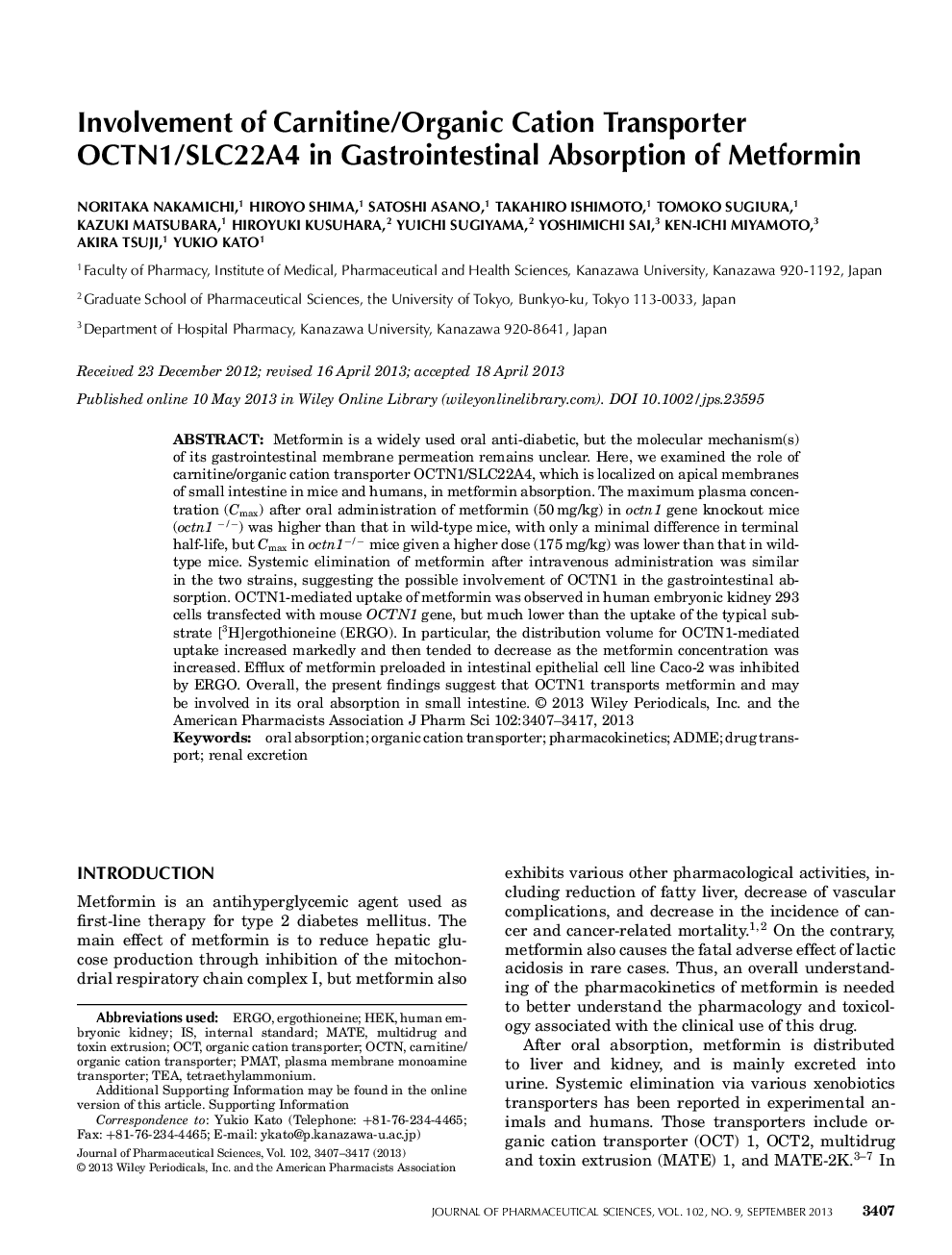| Article ID | Journal | Published Year | Pages | File Type |
|---|---|---|---|---|
| 2484853 | Journal of Pharmaceutical Sciences | 2013 | 11 Pages |
ABSTRACTMetformin is a widely used oral anti-diabetic, but the molecular mechanism(s) of its gastrointestinal membrane permeation remains unclear. Here, we examined the role of carnitine/organic cation transporter OCTN1/SLC22A4, which is localized on apical membranes of small intestine in mice and humans, in metformin absorption. The maximum plasma concentration (Cmax) after oral administration of metformin (50 mg/kg) in octn1 gene knockout mice (octn1-/-) was higher than that in wild-type mice, with only a minimal difference in terminal half-life, but Cmax in octn1is-/- mice given a higher dose (175 mg/kg) was lower than that in wildtype mice. Systemic elimination of metformin after intravenous administration was similar in the two strains, suggesting the possible involvement of OCTN1 in the gastrointestinal absorption. OCTNl-mediated uptake of metformin was observed in human embryonic kidney 293 cells transfected with mouse OCTN1 gene, but much lower than the uptake of the typical substrate [3H]ergothioneine (ERGO). In particular, the distribution volume for OCTNl-mediated uptake increased markedly and then tended to decrease as the metformin concentration was increased. Efflux of metformin preloaded in intestinal epithelial cell line Caco-2 was inhibited by ERGO. Overall, the present findings suggest that OCTN1 transports metformin and may be involved in its oral absorption in small intestine.
